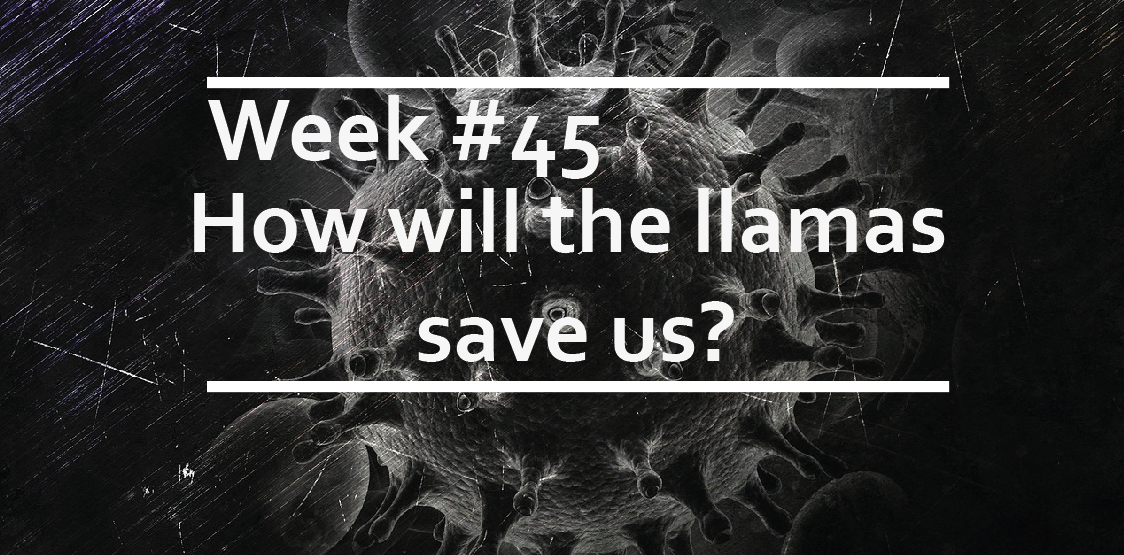How will the llamas save us?
One hundred years ago, the relief that followed the end of a most gruesome war was met with the grief of going back to normal life without many loved ones. Not everybody died in the trenches or under the bombs: between 50 and 100 millions were killed by the Spanish flu.
This year, while we remember the most terrible influenza pandemic in human history, we remain sorely aware that the risk of a new deadly outbreak is not over. In addition, every year, new – although less deadly – strains of influenza spread across the world, requiring the development of new vaccines, which themselves suffer of several issues of low coverage and effectiveness.
Although this scenario looks rather gloom, scientists are resilient people who like challenges. When it comes to flu, the challenge is called “Universal vaccine”.
Broadly neutralising antibodies
It is true that flu mutates and re-assorts regularly, leaving our immune system mostly unprepared to new attacks, but if we look more closely at the antibodies that our own body makes against influenza, we find a number of so called “broadly neutralising” antibodies, which inhibit a larger spectrum of influenza strains. However, coverage remains incomplete and cross-protection between A and B strains is poor. To get broadly neutralising antibodies to work, a combination of several would need to be administered, at a high enough concentration, and several time during the influenza season. This is not practical and not cost-effective.
How can the llama help?
In a recent Science paper Laursen and colleagues report a clever strategy that takes advantage of llamas antibodies. Differently from human antibodies, llama antibodies are composed of heavy chains only, meaning that, in the absence of a light chain, the variable region that recognises the antigen is localised exclusively in the variable domain of the heavy chain, also called VHH. VHHs are about 15kDa in size, about 1/10 of a conventional antibody. The considerable advantage when engineering immunoglobulin, is that many more antigen binding units (or VHHs) can be cloned in the same space, so when there is a need for recognition of multiple antigens (as it’s the case for influenza) VHHs may provide a solution.
Antibody isolation
The first step was to immunize llamas with a pool of HA antigens, provided by an influenza vaccine, and H7 and H2 recombinant HA. Cross-reactive VHHs were then isolated by phage display. This led to the identification of two broadly neutralising antibodies against influenza A (SD36 and SD38) and two against influenza B (SD 83 and SD84).
SD36 neutralised influenza A group 2 but not group 1, while SD38 neutralised Group 1 and, less effectively, some viruses in group 2. SD83 and SD84 neutralised representative viruses from both B lineages.
The crystallographic structures of all these antibodies bound to the HA antigen shed light on the determinants of this broad-spectrum activity: with the exception of SD84, which recognises a conserved epitope around the receptor binding site on the HA head, all other antibodies recognise the HA stem in highly conserved residues and prevent the low pH rearrangement of HA required for viral fusion.
Unity is strength
The next step was to combine the different neutralising abilities of these four antibodies by fusing them to peptide linkers, and then engineering them or not on a human IgG Fc region. These constructs neutralised the same strains more potently than the individual units, and also acquired the ability to neutralize additional strains, suggesting synergistic effect. The presence of the IgG Fc region further increased potency, presumably by shifting from monovalency to bivalency, and by allowing cross-linking of adjacent HAs in different trimers. This combination was more protective in vivo than standard antibodies against all strains tested, with a maximum dosage of 5 mg/kg, and was able to activate antibody-dependent cellular cytotoxicity (ADCC), contributing to viral clearance from infected cells.
Into a vaccine
It would still take several injections of antibodies at different times and at high concentrations to be protective during an epidemic. To avoid this problem, the authors cloned the IgG expressing construct into the adenovirus vector AAV9 and administered it intranasally 7 days before infection. Long-term protection (35 days) was observed against all viruses tested, with complete neutralisation at 5×109 copies of AAV vector.
These are only preclinical data, and more work will be required to understand whether this strategy would be applicable to human. The other question mark is how long for a universal vaccine would remain effective in the context of a rapidly replicating and mutating virus, before additional antibody-mediated selective pressure would cause escape. Nonetheless, this clever and well-thought study represents a very positive achievement, and a robust model to work on.
Could this strategy be successful also for other pathogens? We may need the llamas’ help again…




